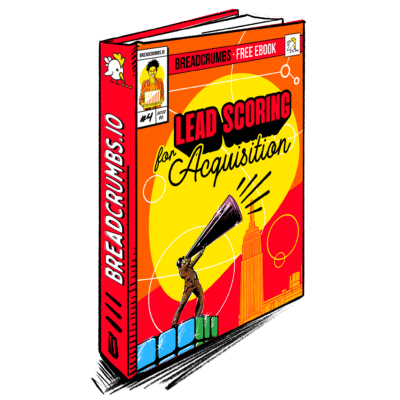DEFINITION
Co-dynamic distribution is a lead scoring practice in which leads are scored based on both fit and activity, and their lead scores are updated in real time based on the recency and frequency of activities.
💡Understanding Co-Dynamic Distribution
Many conventional lead scoring tools only allow you to evaluate fit or activity, but not both.
Fit is the firmographic or demographic data of a prospect, which tells you how closely a lead is aligned with your ideal customer profile (ICP). Activity, meanwhile, tells you what interactions a prospect has had with your business.
These are obviously both two very crucial aspects of lead scoring, because you need both to evaluate how likely it is that a prospect will become a customer, what their LTV may be, and how quickly they may convert.
Someone who books a demo, for example, is likely to be higher intent than someone who only signed up for your email list to join a webinar, even if the latter is closer to your ICP.
So that’s where the “co” comes into play with a co-dynamic distribution.

And as for the “dynamic” part, many lead scoring tools are also static. They’ll collect lead activity information like emails opened or webinars booked, and they’ll pump out a lead score and then never alter it without further actions being taken. It doesn’t matter if someone visited your landing page yesterday or three years ago; the score very well could be the same.
We understand that the frequency and recency of a prospect’s actions indicate their likeliness to convert. Someone who visited your landing page yesterday is more likely to convert than someone who completed a free trial eight months ago. The speed with which you get in touch with leads matters, so we’ve got a time-decay feature that you can customize for your lead scoring models.
And there you have co-dynamic distribution.
🖋 Takeaway
Co-dynamic distribution is the only type of lead scoring model that will actually yield reliable and actionable information. You need to account for both fit and activity, and recency and frequency must be part of that equation.

We use a quadrant approach for co-dynamic distribution with your lead scoring models. This means that each lead will be categorized into a quadrant based on the alphanumeric score they receive based on their fit and activity scores.
An A1 score, for example, is someone who is a top candidate in both fit and activity. Someone who is a B1 is a relatively good fit but still has high intent based on activity.
The quadrant takes you all the way to D4, where prospects are unlikely to become customers based on their firmographic profile and their activity (or lack thereof).
Ready to accelerate your revenue?
Start closing better deals faster, expanding into your customer base and holding on to customers longer (we do retention too)!
What is co-dynamic distribution in lead scoring?
Co-dynamic distribution in lead scoring is the process of accounting for fit, activity, recency, and frequency when assessing the value and intent of individual prospects.
What is a co-dynamic grid?
A co-dynamic grid is the best way to organize scored leads, showing you a lead’s likeliness to convert based on both fit and activity individually.
What is fit in lead scoring?
Fit in lead scoring tells you the firmographic or demographic information about a prospect, and how closely they align with your ICP.
What is activity in lead scoring?
Activity in lead scoring assesses all of the interactions a user has had with your business, both good and bad, to create a lead score indicating intent.
What are the actions to do for each fit and activity scores?
It’s important to add at least three data points for both fit and activity scores in each lead scoring model, allowing you to focus on the information that will most indicate whether or not a prospect aligns with what you’re looking for.
It’s important to evaluate fit and activity scores together and individually to get a better understanding of individual prospects and how they align with your business as potential customers.

Ebook
Lead Scoring for Acquisition
Learn how to use lead scoring to find more demos, product signups, and sales opportunities.
What to do with an A1 contact?
Your sales team should reach out to A1 contacts as soon as possible. These are high-intent leads who are likely to convert, or may be more likely to convert at a higher volume or convert faster, than other prospects. Be responsive and be ready to offer a deal, because they’re a great fit as potential customers.
What to do with a D4 contact?
You should never ignore any prospects, but aside from initial outreach, your sales team shouldn’t hold their breath (or waste extensive resources) on a D4 contact. These users are about as unlikely to convert as they come.
Keep in mind that if a D4 contact starts taking actions that could make them a possible higher-value prospect, your lead scoring model will reflect that on the activity side.
Ready to accelerate your revenue?
Start closing better deals faster, expanding into your customer base and holding on to customers longer (we do retention too)!
-
What Is Lead Scoring?
Read more: What Is Lead Scoring?Lead scoring is the method of assigning points to contacts or potential prospects based on…
-
What is BANT?
Read more: What is BANT?BANT is an acronym that stands for Budget, Authority, Need, and Timeline. It is a…
-
What is lead qualification?
Read more: What is lead qualification?Lead qualification is a systematic process utilized by businesses to evaluate potential customers based on…